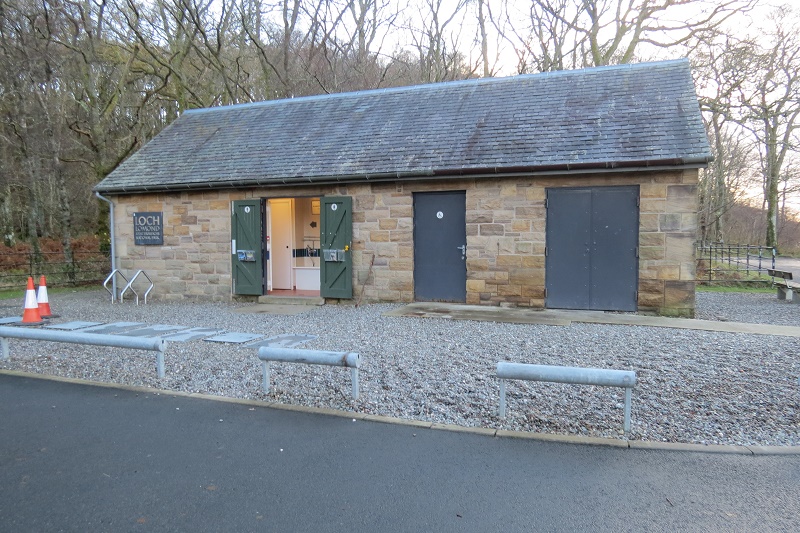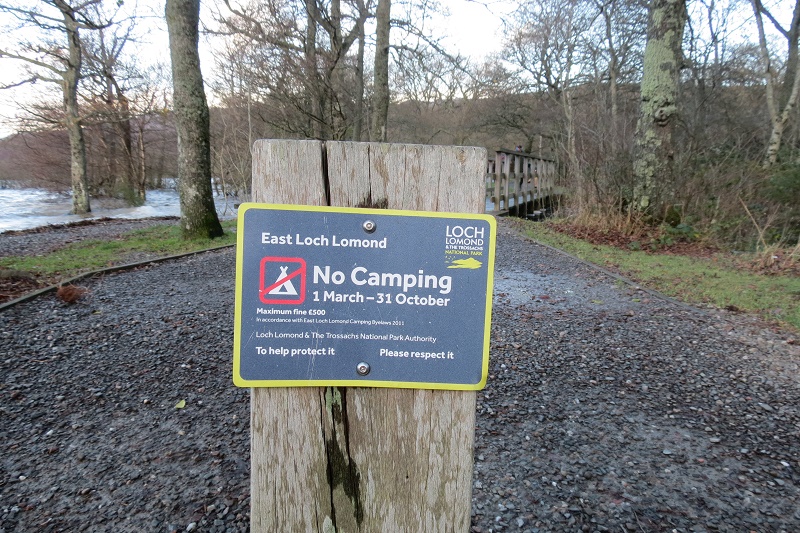
Following the announcement by Loch Lomond and Trossachs National Park Authority staff of their decision to close the slipway and ranger base at Milarrochy (see here), Peter Jack, Chair of the Loch Lomond Association wrote to James Stuart, new convener of the LLNPA, asking the Board to review the decision at their meeting last Monday. The response he received (see here) – which is published with his permission – is not from James Stuart, but Gordon Watson, the Chief Executive. It illustrates a number of things which are going in our National Park including how decisions are made, the Park’s understanding of access rights and the drive to commercialise much of what the LLTNPA does.
The rules governing Board Meetings
In October 2015 the LLTNPA Board revised its Standing Orders, the rules under which it operates Board-Standing-Orders-approved-20151026. The revised Standing Orders further reduced the levels of transparency governing the Board, changing the time the public gets to see papers before meetings from seven to three days, the legal minimum, and more importantly say nothing about the operation of secret Board Meetings, described as “Briefing Sessions”, which outnumber the meetings which are held in public. The Standing Orders do, however, contain some provisions about how public LLTNPA Board Meetings should operate.
Gordon Watson’s main reason for refusing the request from the LLA was that “it is not within our procedures to add additional items as a result of external requests”. This is true, but only to the extent that the Standing Orders do not cover the situation where an outside body asks the Board to discuss a matter. There is actually NOTHING in the SOs to prevent an agenda item being added as a result of an external request such as that made by the LLA. The key point is the Standing Orders (and more seriously the regulations that govern our National Parks) do not set out what discussion and decisions need to be taken at public Board Meetings and what can be taken in secret.
In fact there is a great deal of flexibiliity about what could be discussed at Board Meetings, given the will. Clause 37 of the SOs says its up to the Convener and Deputy Convener to determine the agenda, so most power lies with them, and there is nothing in the SOs to stop them adding an item to the agenda as a result of an external request. Moreover, since the request was received five days before the meeting and final Board agendas now only need to appear three days before the meeting, the convener in this case could have added this item to the agenda and included the letter from the LLA, whic was self-explanatory, among the papers. Alternatively, every Board Meeting includes a section on “Any Other Business”, and there was nothing to stop the Convener raising the letter from the LLA as part of this. That the letter was NOT discussed therefore was not because of the Park’s rules but because Gordon Watson, the Chief Executive, did not want it discussed.
Moreover, Clause 24 of the SOs states “A Special Meeting may be called at any time by the Convener to discuss an urgent item of business”. There are no notice periods set out for this so again the Convener could have held a special Board Meeting after the scheduled one to discuss the Milarrochy issue. The problem I believe is the Board is not in control, its the senior staff management team who appear to be running the show and it appears that the Park Chief Executive,Gordon Watson, is simply being allowed to interpret the Park’s rules to suit staff and avoid having decisions scrutinised in public.
Public Safety,outdoor recreation and access rights

Now consider the implications of this statement from Gordon Watson’s letter:
“As the landowner the Park Authority is responsible for public safety on the beach and it is not considered appropriate to allow vehicles and trailers to use the beach unsupervised”.
The legal position of what responsibilities landowners have for public safety on their land is complicated (there are some well established duties such as fencing off mine workings) BUT, and this is the key point, while landowners have a general duty of care, legally there is a general presumption that they are not responsible for what might happen between or to outdoor recreation users in the course of that recreation. If they were, our access rights would be in tatters. Imagine what would happen if any potential issue associated with vehicles and trailers taking boats to the water’s edge on rivers and lochs across Scotland was seen as the responsibility of the landowners – that could put an end to every canoe business, and all recreational canoeing, in Scotland. So, this appears to be a very dangerous sweeping statement from Gordon Watson, who has never understood access rights, and appears inadvertently to be undermining the whole legal framework on which they were based. Indeed, his statement is a hostage to fortune for the LLTNPA: the first accident that happenson any land the Park owns and what keen personal injury lawyer will not be quoting Mr Watson’s statement as part of their claim against the National Park?
If the LLTNPA has any sense it will retract that statement now, and could justify this on the basis that Mr Watson appears to be taking a different stance to that taken by the National Park over three years ago in the court case Michael Leonard v LLTNPA. This concerned responsibility for an accident on the West Highland Way and which the LLTNPA won (see here). (Something for which they deserve credit)
This is not to say that the Park has no responsibilities for public safety at a slipway to which they had invited people to launch boats (as opposed to the beach as a whole). There has however been no proper risk assessment and the Park’s own figures show there have been no accidents. That’s not a surprise to me because boats are launched from trailers all over the country. The Park’s basic attitude however appears to be that the public are basically irresponsible and constantly need supervision to avoid risks , whether this is camping or launching boats, and whatever they don’t have the resources to “police” they will ban. There might be a case for supervising boat launching at Milarrochy – apart from the need for the LLTNPA to collect the fees – but the Park has not shown this is needed and should be consulting the LLA (who do take safety seriously) to determine whether this is needed.
Parkspeak and the outsourcing agenda
Mr Watson’s claim in the penultimate paragraph of his letter that the closure of the slipway could be an “interim position” pending finding a new operator for the site, begs the question, should the Park have not consulted on the future of the site before closing the slipway? The rest of the paragraph is simply an attempt to sell the Park’s outsourcing and commercialisation agenda, most of which is discussed in closed session at official Board Meetings. It appears that they have already decided to outsource Milarrochy, without any public consultation, and perhaps behind the scenes had already agreed to close the slipway which would be another reason why Gordon Watson would not have wanted this discussed at the public Board meeting.
What needs to happen
I believe that recreational organisations need to force the LLTNPA to discuss and engage with them on recreational issues much more openly because it appears the Park will not do this voluntarily. One way to do this is included in Board Standing Orders – Clauses 33-36 allow for public deputations. I hope the LLA consider asking for a deputation at the next Board Meeting to discuss Milarrochy (any deputation needs two weeks notice, the Convener then decides if it should go on the agenda and the Board Members at the meeting vote on whether to listen to it). It would be interesting to see how the LLTNPA responds.
There are wider possibilities though – how about a deputation on the legal framework for access rights and how the Park could extract itself from the hole it is digging for itself in the way its trying to implement fundamentally flawed camping byelaws?

Well said and very interesting. I’ve emailed our thoughts on this to the park authorities and so far haven’t even had a reply!